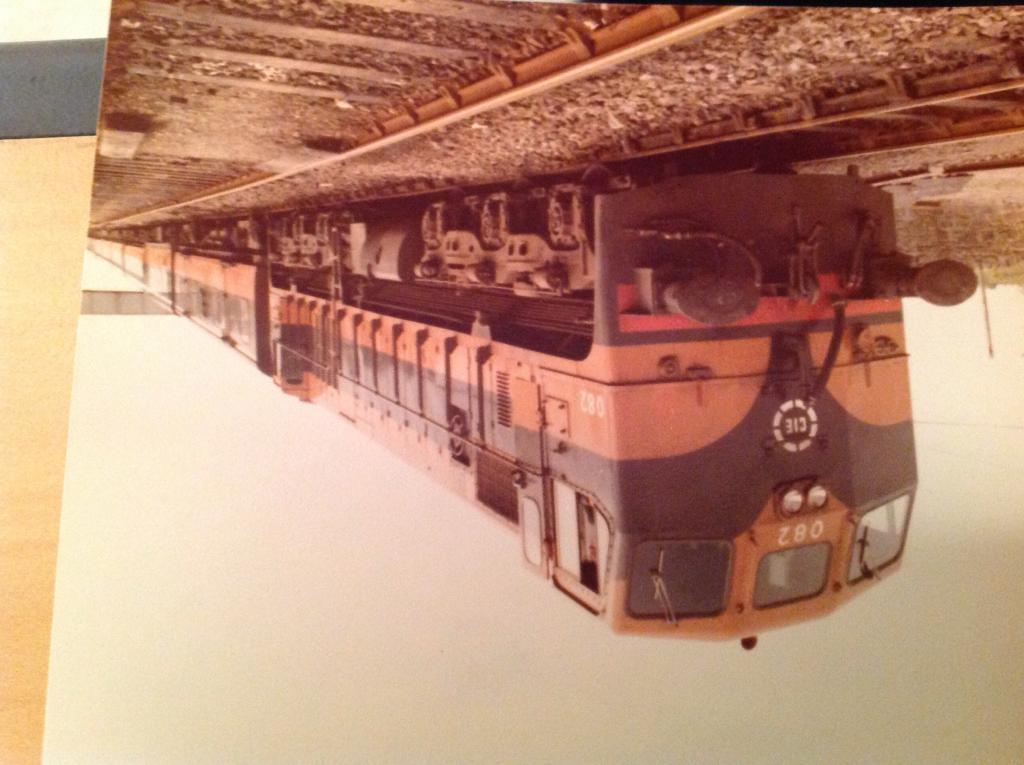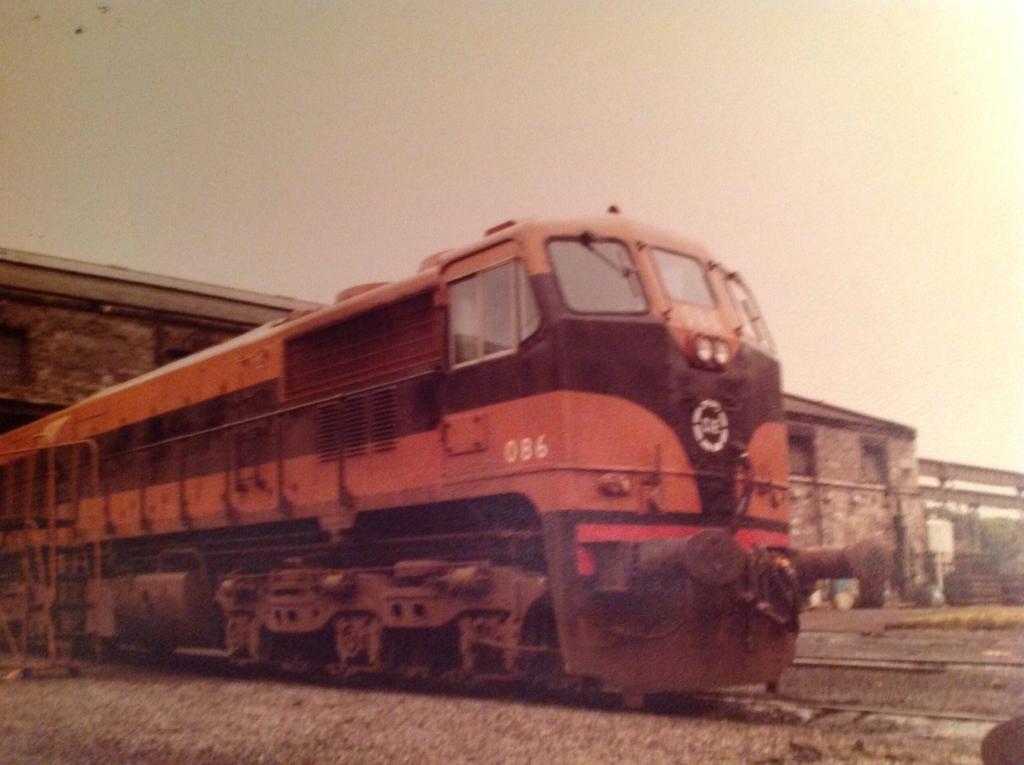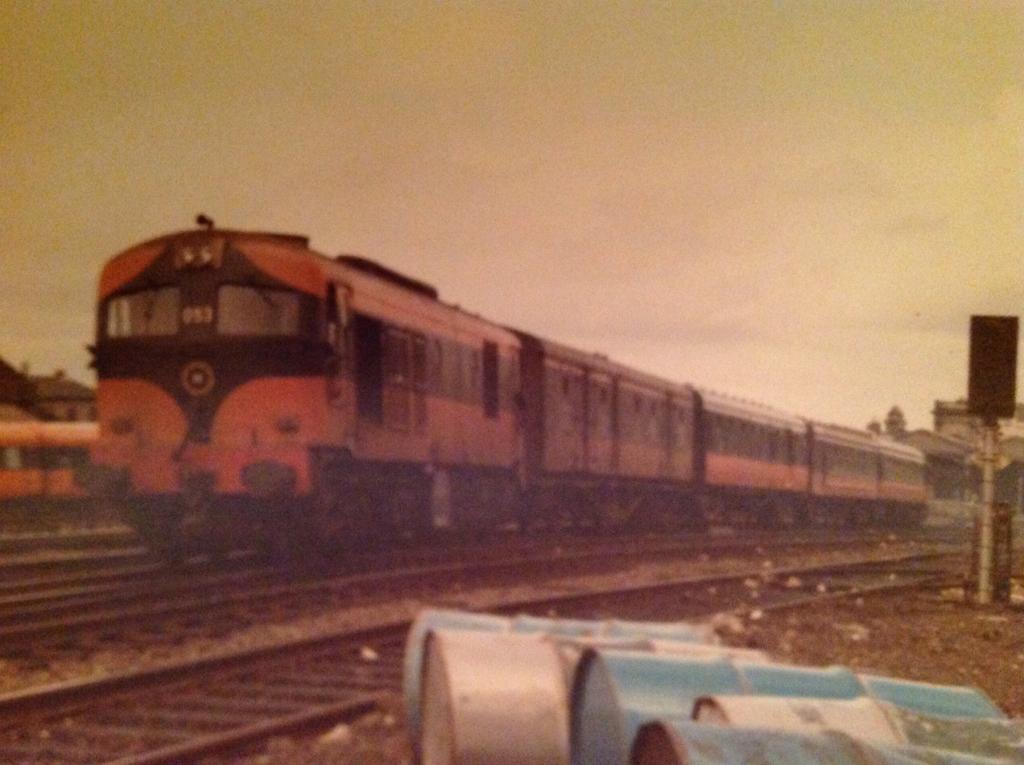-
Posts
15,897 -
Joined
-
Last visited
-
Days Won
394
Content Type
Profiles
Forums
Events
Gallery
Blogs
Community Map
Everything posted by jhb171achill
-
That is a lovely job. I always thought the silver and black would have suited a 201 better than an 071!
-
So, a Pratt with a bottom, and badgers, well... Wow! The mind boggles.... :-)
-
The W & L one ended up, as far as I remember, derelict at Mullingar where it attracted the attention of the RPSI with a view to preservation. But it was sadly too far gone, and had started to fall apart, thus both of the last two coaches from the W & L never saw preservation.
-
That's a superb layout overall - it's easy to forget that all-black "C"'s, "A"'s and B101s would have rubbed shoulders with grey 121s - as well as all sorts of other things - in those days. I'll report back with findings re snails on them once I find a particular photo I'm looking for! I'd almost swear the lining was white, though.
-
Really superb, very realistic!
-
The stencilled version of the snail was the norm after, I'd say, the mid 50s, but was only seen in this "non-filled-in" form on wagons. By the late sixties, while most wagons wore CIE "roundels", almost all remaining with snails - and there were lots - almost all had the stencilled snail. That's a fantastic looking 121, Railwayman, first time I've seen a model in light grey. I'm not 100% sure on black lining on the "snail", though, will have a delve and see what I can find.
-
There were two (at least), Hunslet. The red and cream one was one of the last two surviving W & L bogie coaches, the number of which escapes me at the moment. One more, former GSWR stock, was standard wagon brown. This was ex GSWR 837 of 1902, identical to the DCDR's preserved sister coach, 836 of the same year.
-
Post 1950, Jawfin, they became more and more common for a few years, as they were the official livery, but by 1960 many steam locomotives either had snails entirely obscured by dirt, or none! A quick "straw poll" could be done of pictures of tender engines in the various books that cover the period - I'd guess 50 / 50 by then.
-
Apologies for any confusion, Garfield. Summary: Both snails and numerals on all green locos: all "e-d-n", lined gold; nothing yellow ever. 800-2 only had numberplates; no other green locos had numberplates. Grey or black locos: all snails "edn", all numerals yellow. One thing also worth mentioning is that many loco tenders carried no snail at all. This was for two reasons. Firstly, pre-1945 it was GSR days, and many plain grey tenders last painted by the GSR lasted well into CIE days before a re-acquaintance with the Big Grey Paint Pot. Secondly, in the late fifties many of the few steam locos repainted simply had no snails applied. This, as photos will bear out, was especially true of the few turned out in black.
-
Had a look, gents..... Any snails shown appear to come from the transfers mentioned by Minister; as far as I am aware, all "snails" were applied by transfer. There's an exception to every rule, and with regard to "snails" I know of one - a former T & D loco on the Cavan and Leitrim carried a very small white painted one for a while. (In addition, one had chalked ones on it!). This would be the only exception I'm aware of to the notion that (a) no tank locos - broad or narrow - ever carried one, and (b) no snails were white! I'm always interested in exceptions, but I would suggest that any "yellow-looking" snails were discoloured or faded standard transfers. As of numerals, apologies if my post misled; none of these were eau-de-nil except on green locos where all were.
-
Garfield / Old Blarney All loco numerals on grey or black locos were pale yellow. Numerals on green logos were "eau-de-nil". I was particularly referring to the "snails", which were "eau". When faded, they often looked a pale yellowish, and on a dirty or faded loco both the yellow number and the snail would have faded to a nondescript yellowish shade. When newly restored about 1990, the RPSI's 461 carried a yellow snail for a while, and being newly restored was much photographed thus. This may have given rise to perceptions of yellow snails - if so, it amplifies the points made elsewhere that preservation liveries - in this country anyway - should never be relied on, as a numerical majority of all preserved locos and coaches, and (from the top of my head) all goods stock, are incorrect in livery details. I'll have a look at that book and report back....!
-
That's looking very good. It seems to run very smoothly.
-
Someone asked me recently about colours of the 1945-62 CIE logo and accompanying lettering. Firstly, the "Flying Snail". On all steam locos (green, the very few black, or the vast majority grey) - Pale green (eau-de-nil). Never white or yellow. Always lined in gold. On early diesels of B113 and D classes - same until repainted light green. On all other diesels, namely the above in light green and all others later, including the very few paintings of "A" class locos in dark green, the "snails" were unlined light green. A note, in relation to DCDR's G611: no "G" ever carried a snail. Carriages: light green again, lined in almost all cases when dark green (exceptions being a handful of vehicles repainted at Albert Quay); and unlined with lighter green livery. I suspect there were a few cases of lined snails on light green six wheelers, though! No silver coaching stock ever carried the logo. Wagons: White was used from the outset, but in the early 50s, some of the darker grey goods stock had light green snails and numerals. Numbering was always the same colour as the "snail" on diesel locomotives, goods and passenger stock in any livery, but confusion often reigns with regard to steam engines. While the cabside plates had grey (not black) backgrounds on grey engines, and black backgrounds on black engines, there were only three green locos with plates; the 800s. All initially had dark blue backgrounds, as on 800 in Cultra, but 801 and 802 ended up with red backgrounds, as seen on the RPSI's 461 now. (461 was never green in traffic). Raised numerals on plates were painted white or cream, or polished metal. Once plates were replaced by numerals, these were always painted in light yellow. The numerals were never lined. Thus, a typical grey or black painted CIE locomotive had an unlined yellow cabside number and a lined "eau-de-nil" snail. Snails were thus never yellow. I hope the above is of interest and use.
-
UTA ex GNR had, concurrently.... UTA green. Some railcars plain green ends, some wasp striped. Both versions of UTA crests. UTA blue / cream; two variations with broad or narrow cream bands. GNR navy and cream with overlaid UTA "red hand" crests. NIR maroon and grey. Carriage stock in GNR brown, UTA green, and post-'67, early NIR maroon with thin grey stripe. CIE lighter green coaches Black n tan coaches Silver tin vans Silver, green, black or black'n'tan CIE diesels, with the odd grey 121 thrown in. Steam engines in lined UTA black or badly faded GNR blue, with of without GNR markings on tenders. Freight stock - where does one start! CIE - all grey, quite uniform. Brown hadn't started yet. Mostly (white*) snails, some tan and white roundels. UTA wagons had a mixture of (much darker) grey, many ex-GNR markings still, some bauxite brown (some ex GNR vans and ex-NCC (but not ex GNR) open wagons). Red Inglis containers. GREY CIE cement bubbles. Orange appeared about 1970/1, as far as I recall. Doubtless more....... The visiting CIE weedspray was painted black, but the chemicals had it heavily weathered (stained!) light grey over a lot of it. The crew coach was faded red and cream, leaving a pre-adolescent me to wonder if it was a re-gauged CDRJC coach! (* Prior to about 1960, some snails painted on older wooden wagons were light green. Others, and all after that, were white).
-
Pictures taken in 1977/8 on CIE system
jhb171achill replied to jhb171achill's topic in Photos & Videos of the Prototype
Now that you mention it; they were indeed silver to start! But brake dust made them brown..... -
Pictures taken in 1977/8 on CIE system
jhb171achill replied to jhb171achill's topic in Photos & Videos of the Prototype
It was certainly brown flats on that train. -
Pictures taken in 1977/8 on CIE system
jhb171achill replied to jhb171achill's topic in Photos & Videos of the Prototype
Noel - fair point - I did try, but couldn't manage it.... Wooden stock would certainly have lasted longer - probably until railcars - if it wasn't for Buttevant and Cherryville. The flats for the Asahi were standard ones and I only ever saw them brown. Such wagons were rotated with Guinness traffic and containers, so keeping some in red would not have been practical. -
Pictures taken in 1977/8 on CIE system
jhb171achill replied to jhb171achill's topic in Photos & Videos of the Prototype
On an unknown date about 1977, the Ballina Asahi passes Glasnevin. The tankers don't show up well in this rather poor photo, unfortunately, but they were silver, with bright red frames, and the CIE logo in normal orange and black. They were mounted on standard 4 where flats, which were in normal CIE brown. From memory, "A" class locos were regulars on this run, though I wonder if restrictions on the Moy River bridge allowed them beyond Claremorris? Maybe someone might confirm. 071's were certainly not allowed up the branch at that time and for many moons afterwards. -
Looks most interesting, best of luck. If it was me - and this is a constructive suggestion - I think if I was mostly interested in the locos coming and going, I'd have it much as you have, but if I was more interested in operations and shunting, possibly less loco sidings and at least 3, better 4, container roads. If it's modern era, I'm presuming no steam. Any 121s would most likely be part of a "pair" with another, or a 141 or 181, so is a turntable needed? All depends on your preferences for how you'd operate it. Good luck anyway, and doubtless you'll keep us posted.
-
Pictures taken in 1977/8 on CIE system
jhb171achill replied to jhb171achill's topic in Photos & Videos of the Prototype
I could be wrong on this, josefstadt, but I have a notion that while, as you say, the 32xx's were indeed Bredin-origin, there might have been sone converted from the original Bredin-pattern CIE stock of 1950-3? Must consult the archives. It would be interesting to clarify. Certainly, during the years from 1950-62, several different side profiles were evident in new builds. Here's something for 071 persons. First, an up train awaiting departure from Westport, July 1978. Behind the loco, a mail van, then a Dutch can, then four Cravens, a laminate, and a laminate brake, the details of which I didn't record. Followed by a new loco in Inchicore the previous year. For modellers, note the unique non standard logo, larger than normal, different template, and with a white surround instead of tan. And the loco body colour was very much more brownish, again uniquely. This was because they were painted in La Grange, Illinois, not Inchicore. At first repaint they were all "corrected". -
Pictures taken in 1977/8 on CIE system
jhb171achill replied to jhb171achill's topic in Photos & Videos of the Prototype
Indeed it was, Hunslet. I must try to find a pic I have of a 10 coach train (10:30 to Cork) passing Port Laoise about 1976 with almost no two coaches alike...... -
Pictures taken in 1977/8 on CIE system
jhb171achill replied to jhb171achill's topic in Photos & Videos of the Prototype
Hunslet, the one behind the loco is a CIE parcel brake of about 1950-3 vintage, then a laminate brand of 32xx series, like the one at Downpatrick, then a Park Royal, then a Craven. Until the 1990s, Cravens rarely ran in complete rakes - there would be one or two in trains otherwise made up of a few of just about everything else.... -
Absolutely top class!
-
Pictures taken in 1977/8 on CIE system
jhb171achill replied to jhb171achill's topic in Photos & Videos of the Prototype
[ATTACH=CONFIG]16648[/ATTACH]. Oil [ATTACH=CONFIG]16649[/ATTACH]. Cement [ATTACH=CONFIG]16650[/ATTACH]. Fertiliser
.png.c363cdf5c3fb7955cd92a55eb6dbbae0.png)




